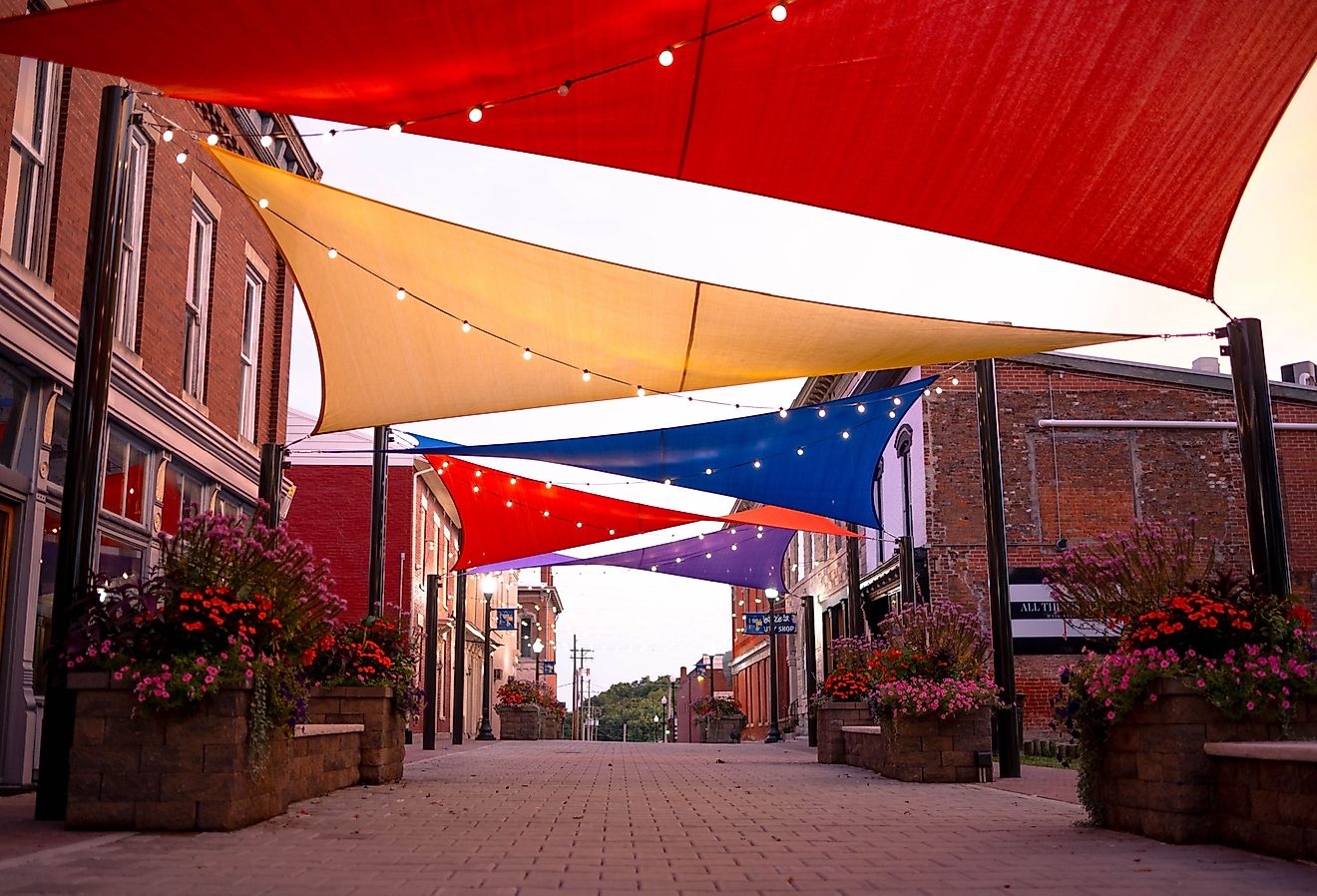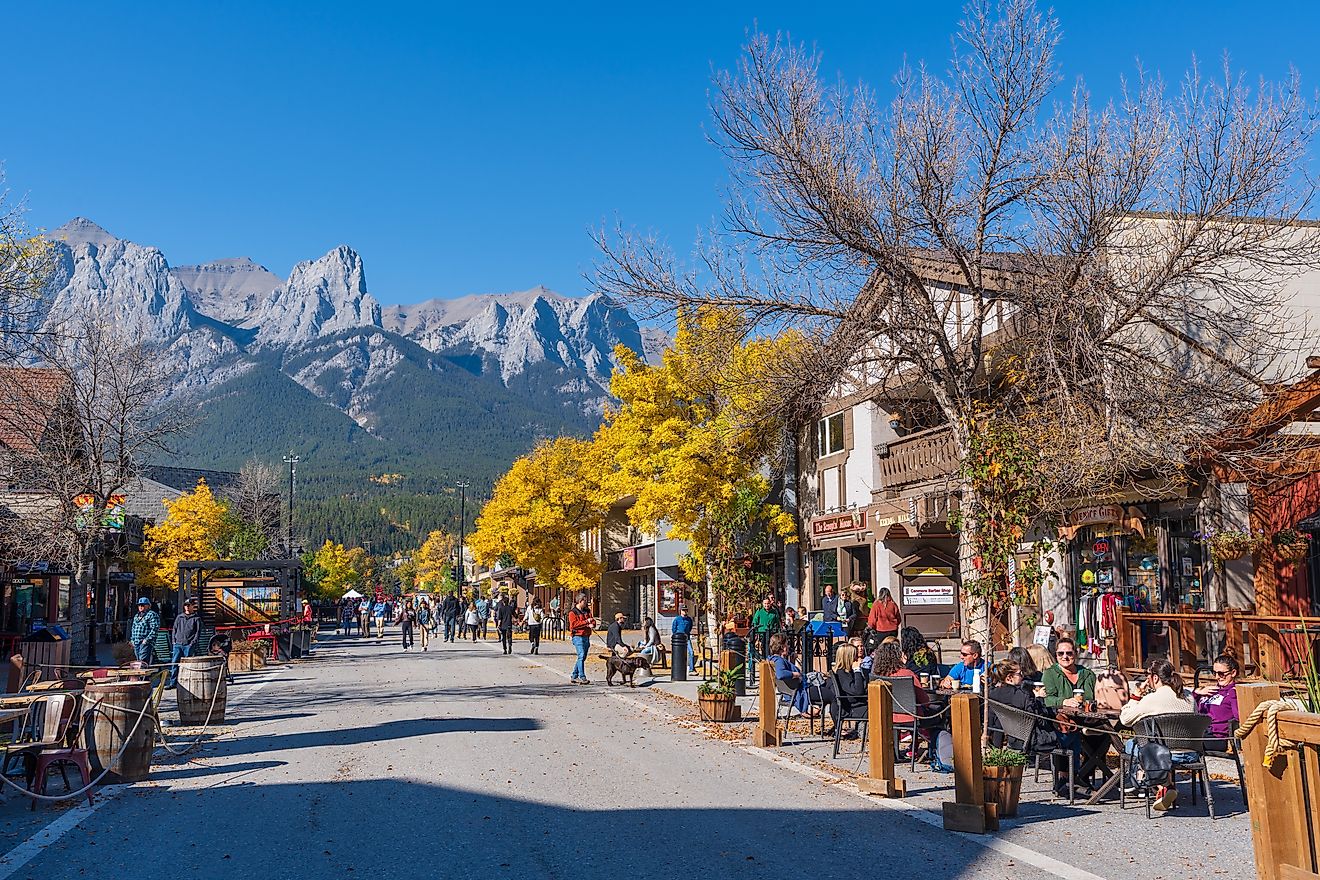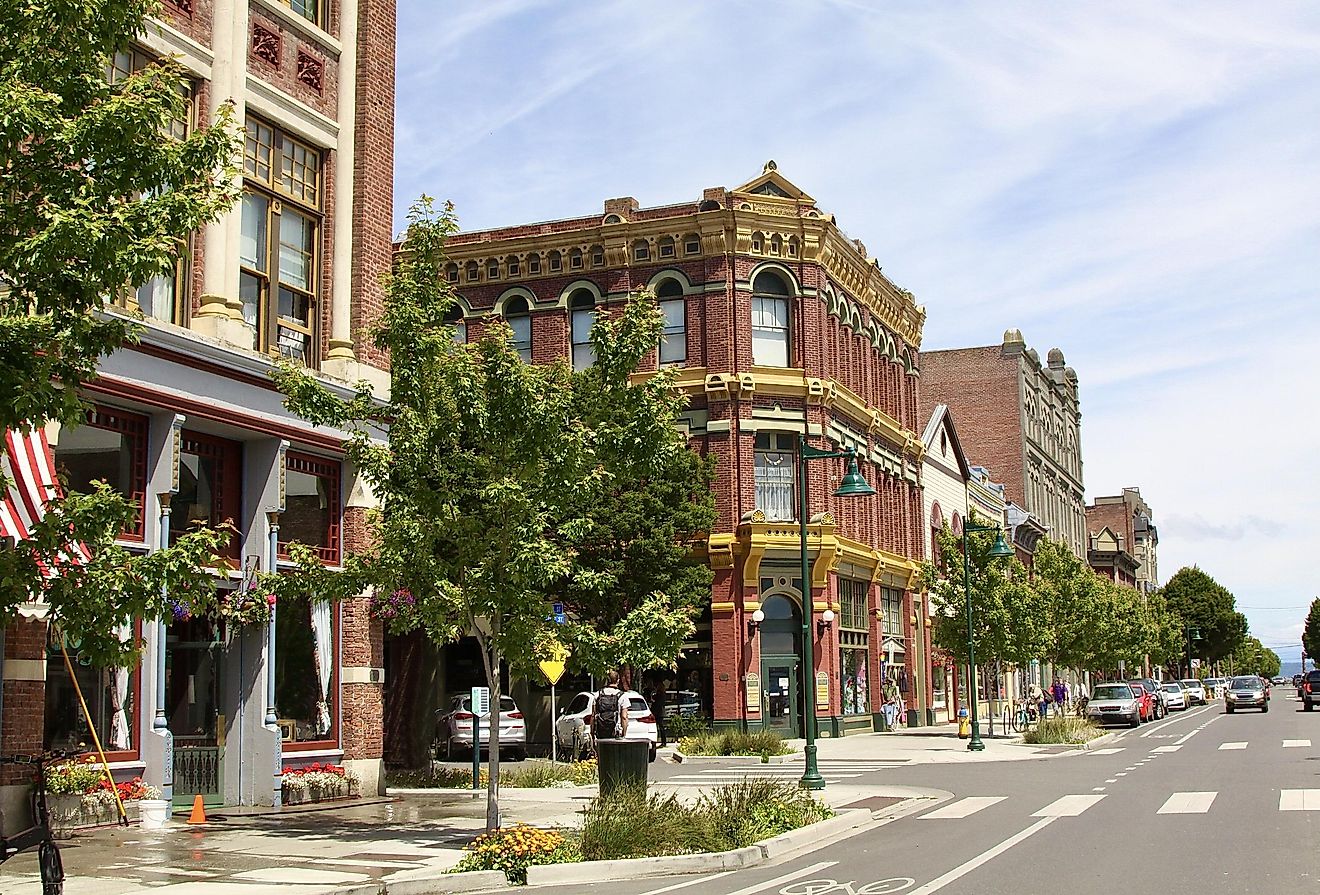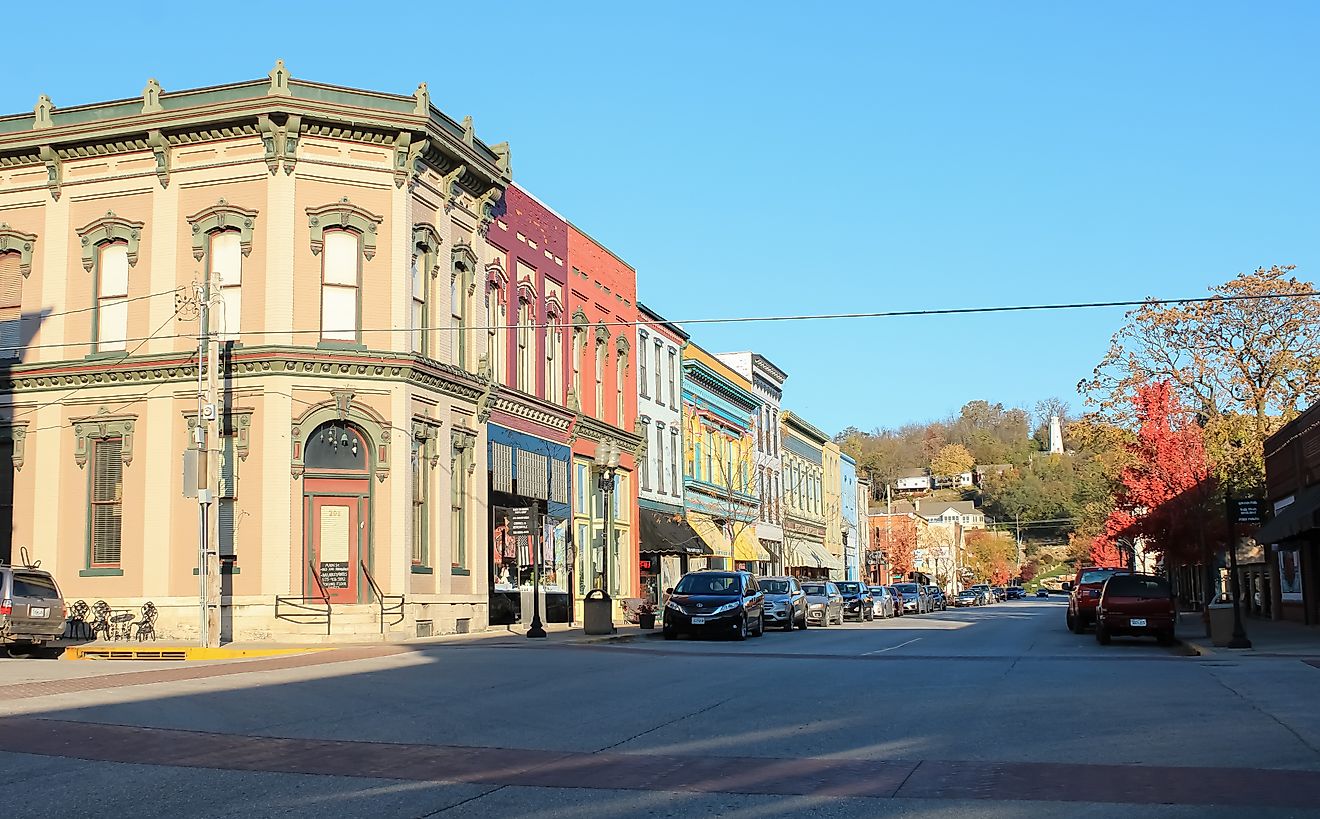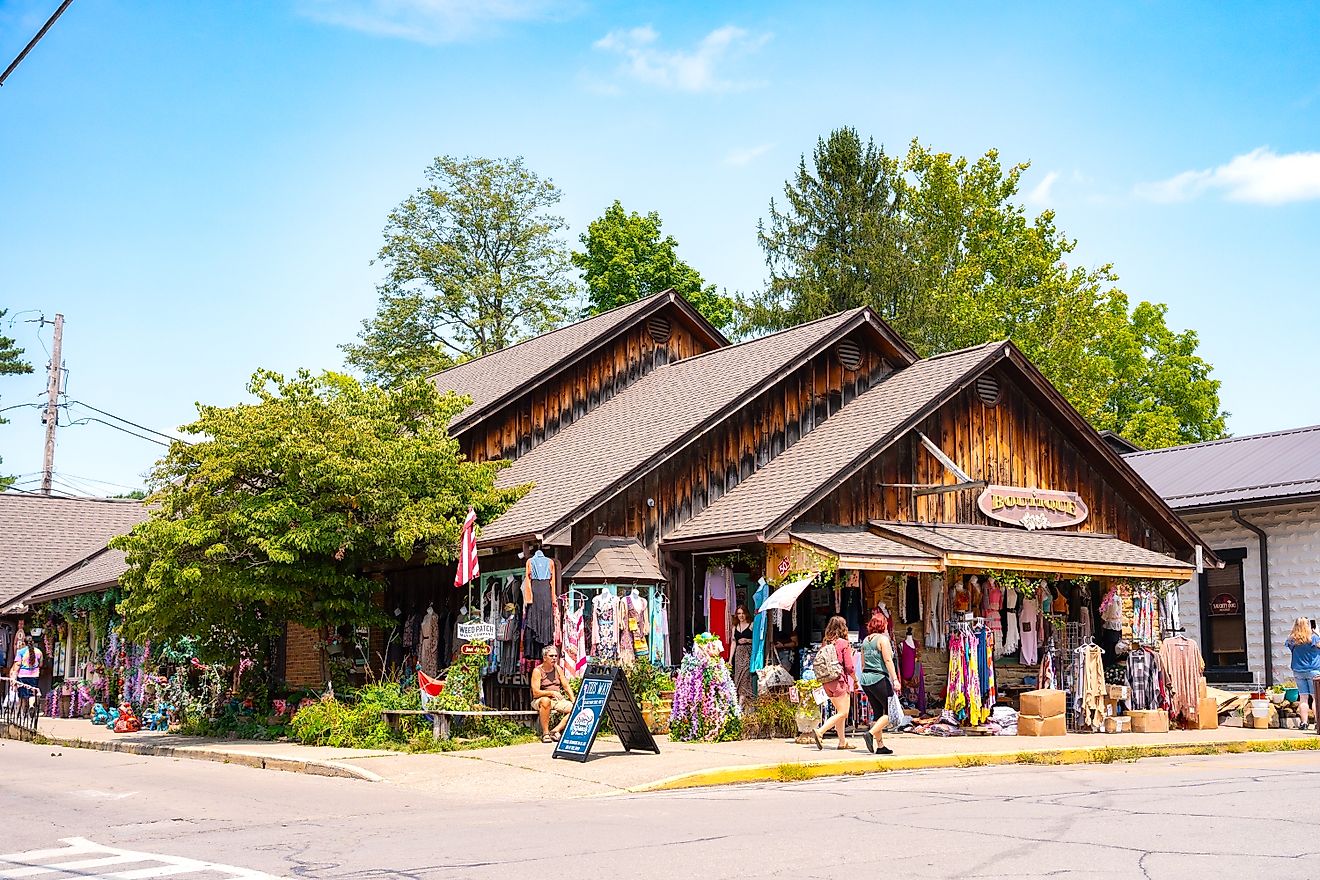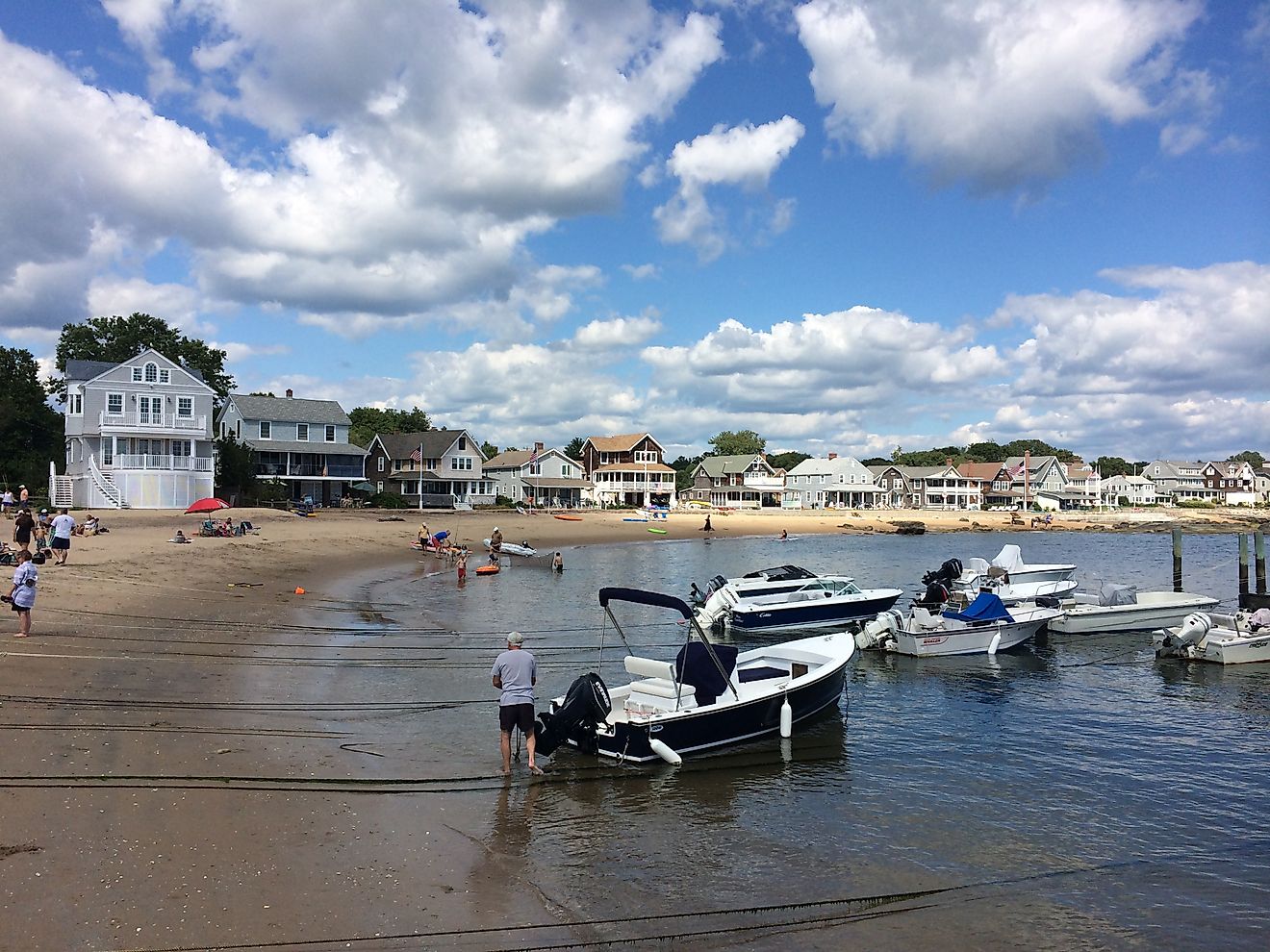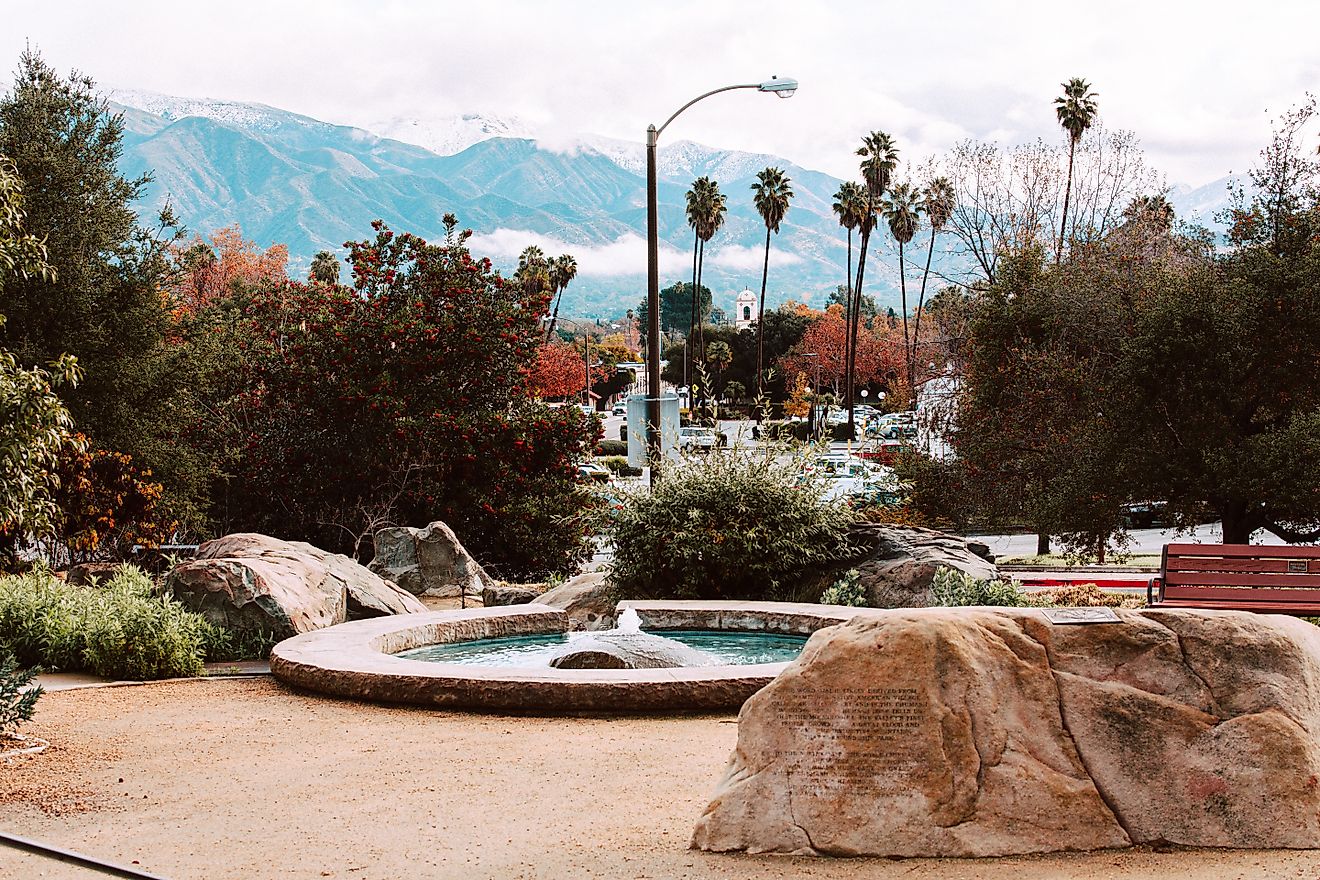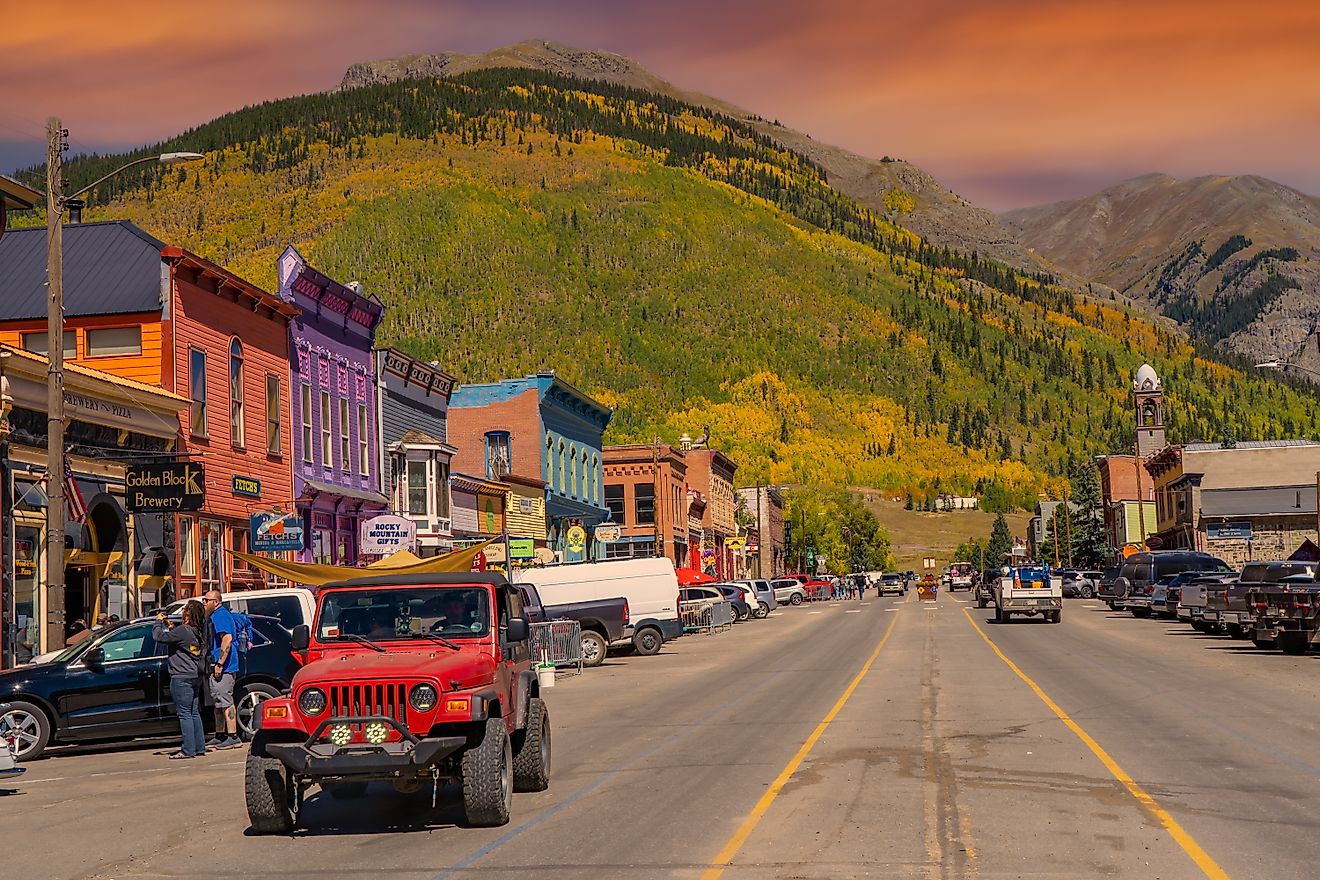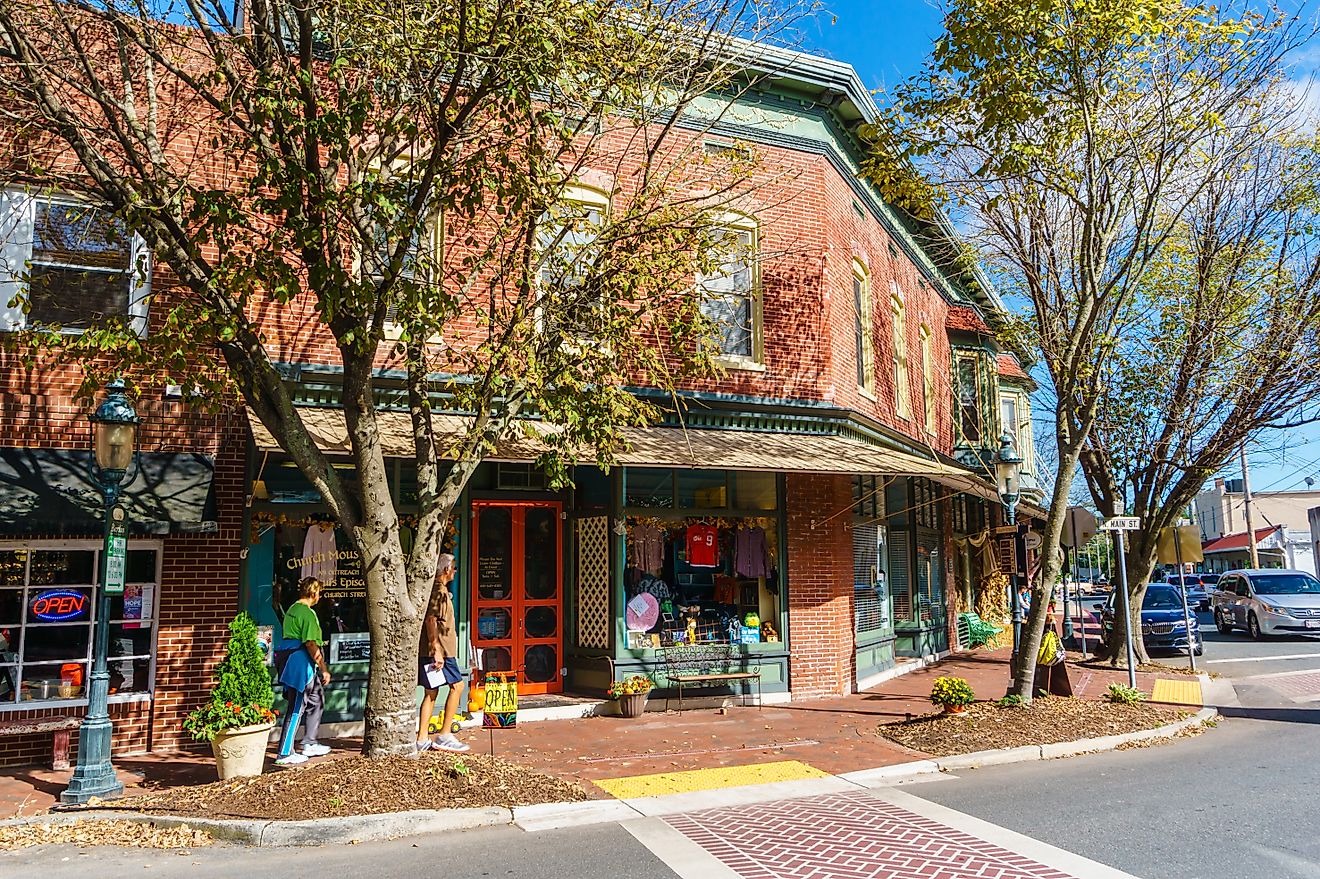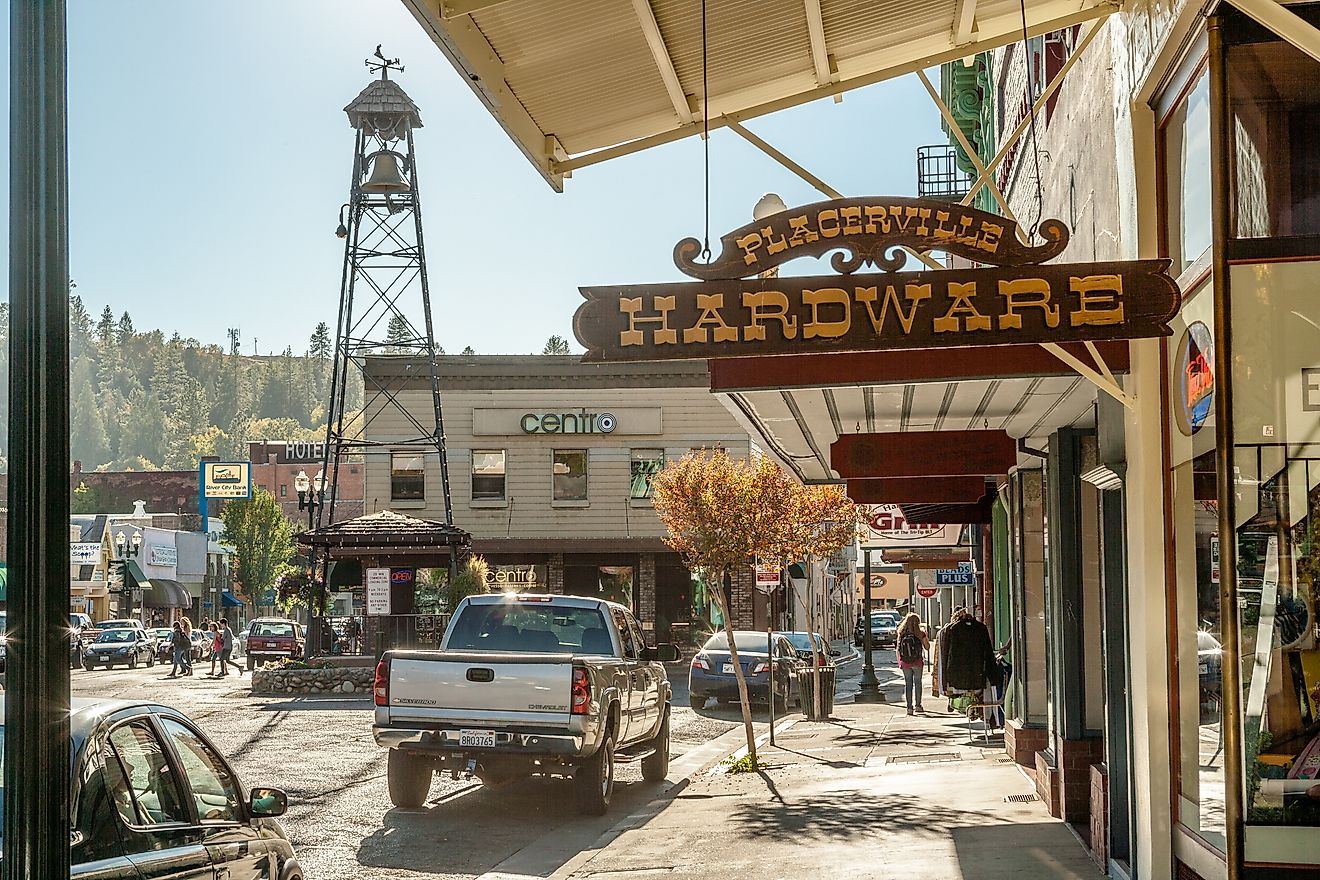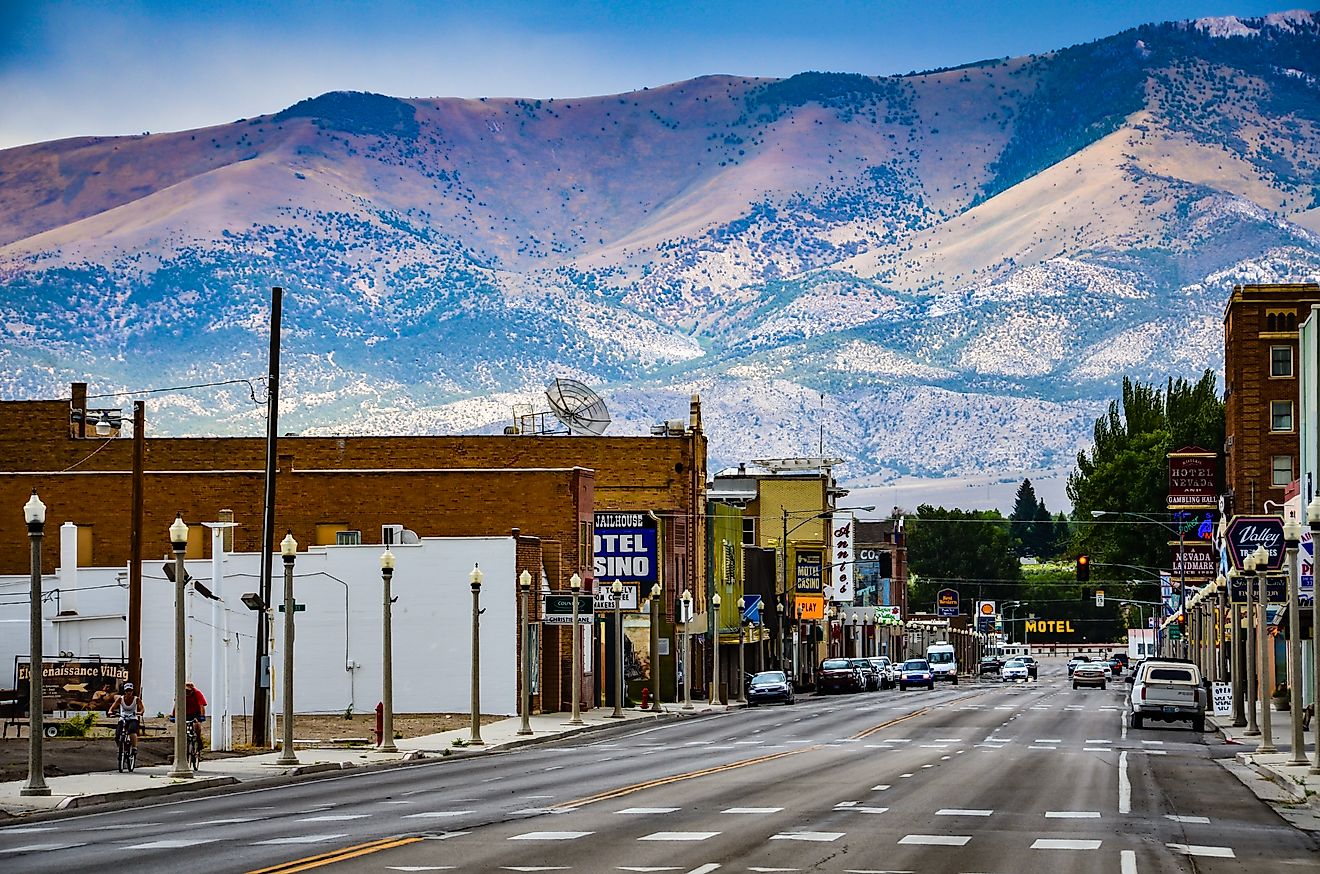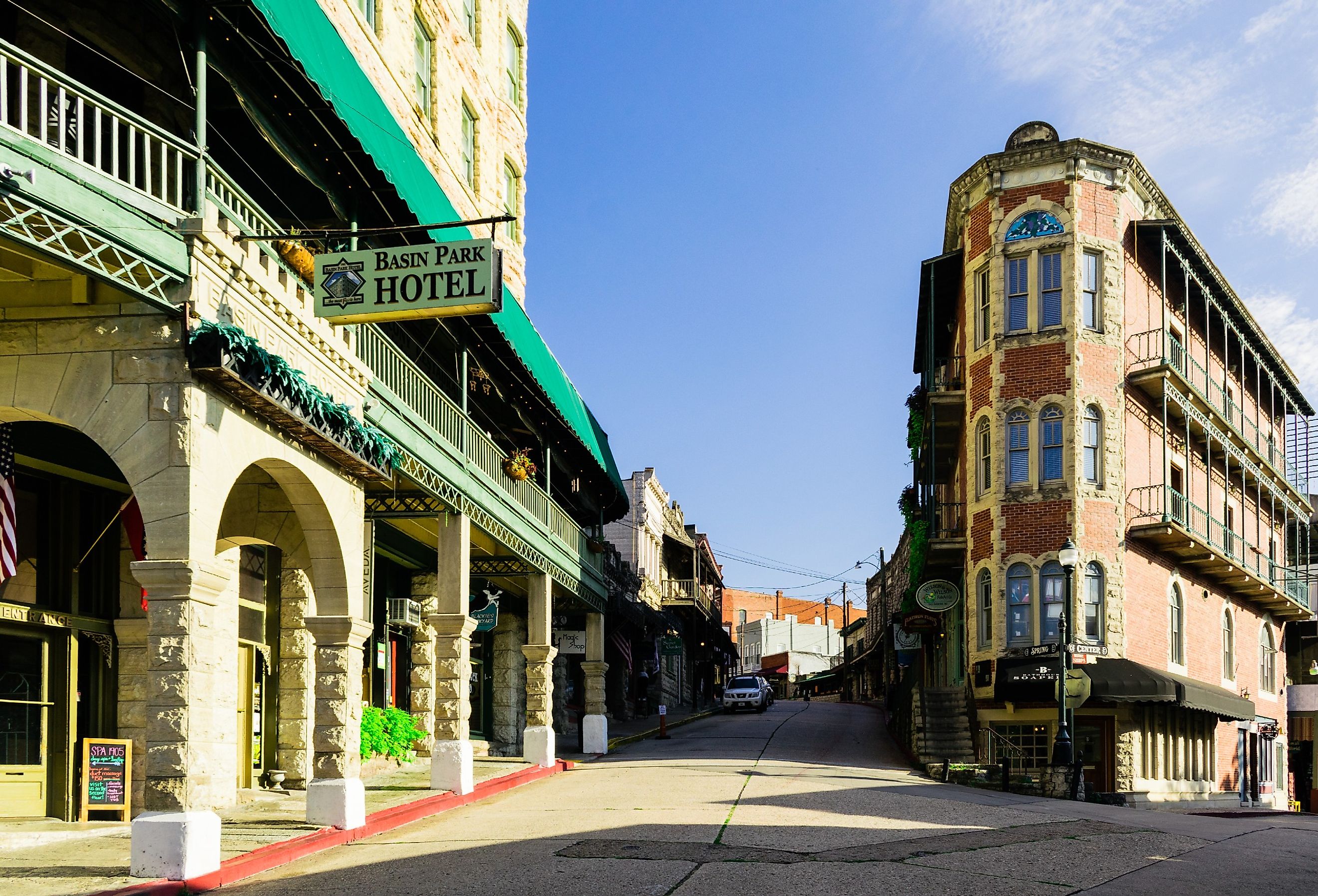
These Small Towns in Arkansas Have the Best Historic Districts
Arkansas, which lies just west of the Mississippi River, owes its development to river industries and the subsequent businesses that river trade helped support. The state's economic boom times, linked to cotton and later to crude oil production, shaped its fine homes, its historic downtowns, and the growth of the state overall. Arkansas' architecture, whether in upscale homes or the public buildings that dot the state, may be the state's best-kept secret. In short, these small towns and their historic districts offer great examples of what makes Arkansas unique.
Eureka Springs

Eureka Springs, population 2,200, lies in northwestern Arkansas and has the distinction of having been on the National Register of Historic Places for the past half-century. Originally a 19th-century spa resort town, given the abundance of local thermal springs, Eureka's downtown retains a Victorian aspect.
The town features winding streets along its hilly terrain, limestone buildings, and other historic attractions, notably its old hotels: the Basin Park Hotel and the Crescent Hotel, and the Palace Hotel and Bath House. These days, the town complements its spa heritage with a robust cultural calendar, including theater productions, and seasonal-themed events for fall and the winter holidays.
Batesville
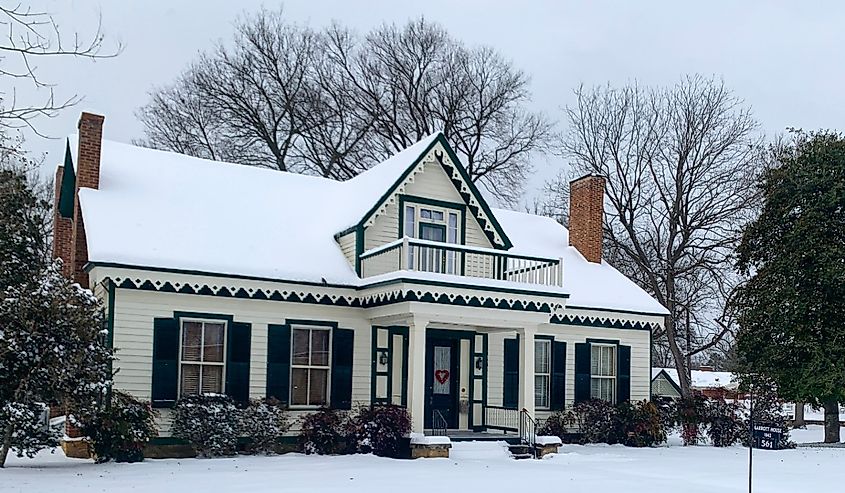
Batesville, with 11,200 residents, is a pretty small town and the seat of Independence County in the state's northeast. Batesville plays a key part in Arkansas' transportation and logistics, stemming especially from its position along the White River.
Batesville's historic points of interest include the Garrott House, an 1840s stately home included on the National Register of Historic Places, as is the Cook-Morrow House, built in the early 20th century. Numerous structures in Batesville's downtown reflect local deposits of limestone, sandstone, and marble, quarried locally for generations. Today, Batesville's industrial tradition continues, given the town's role as a leading regional hub for manufacturing.
Paragould

Paragould, population 30,200, lies in northeast Arkansas near Missouri and Tennessee. The town's downtown is on the National Register of Historic Places, not least for cultural institutions like the Collins Theatre, which has been part of the town for nearly 100 years.
In addition, the Greene County Courthouse, built in 1888, makes for a fine example of the Beaux-Arts architectural style, and serves as the current base of the Paragould Regional Chamber of Commerce. Down the road stands the Beisel-Mitchell House, an example of 1930s Spanish Revival and another vibrant component of Paragould's diverse building styles.
Arkadelphia
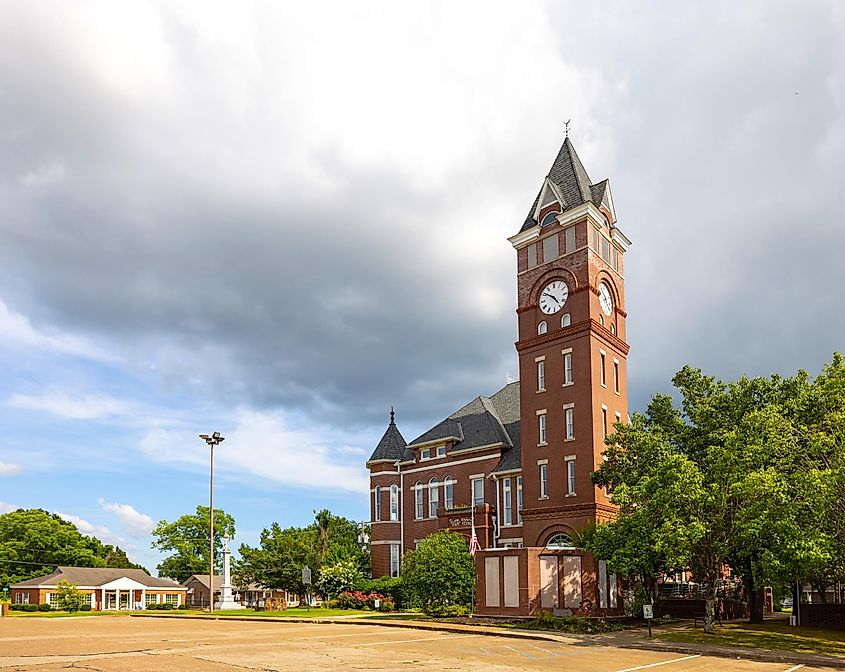
Arkadelphia, with 10,300 total residents, lies in the foothills of the Ouachita Mountains and along the Ouachita River in Arkansas' southwest, not far from the border with Texas. Originally settled in 1842, and known under the nickname “The Delph” by locals, Arkadelphia has maintained the historic character of its downtown corridor, with a diverse set of notable buildings from the late 1800s and early 1900s — mostly centered on Caddo Street, the town's famous thoroughfare.
The town's historic commercial district, despite the damage wrought by a 2009 tornado, offers stately homes like the Captain Henderson House and the James E. M. Barkman House, an area settler who erected the house around 1860.
Ozark
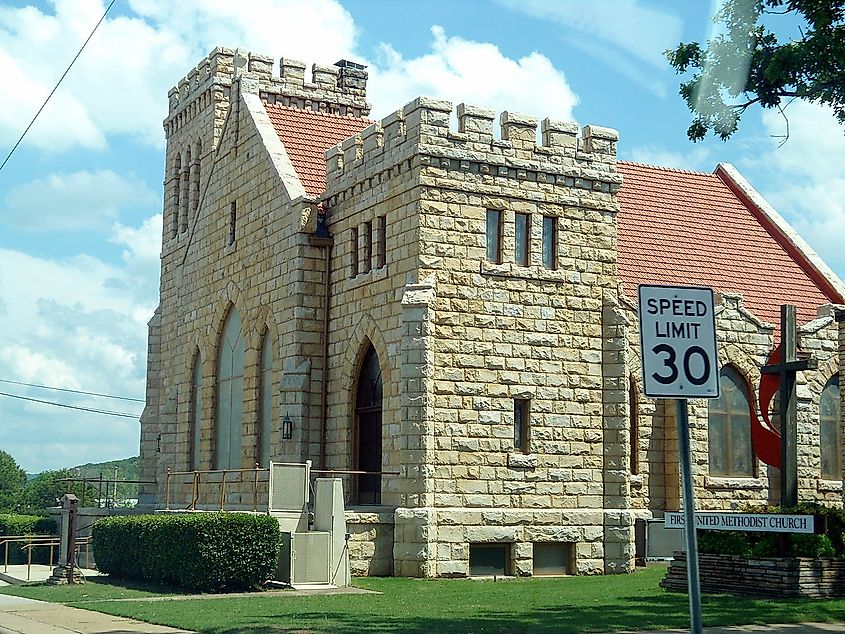
The northwest town of Ozark, population 3,600, got its name from "Aux Arcs," the name early French traders and fur trappers gave to the area’s rolling and undulating terrain. The English adaptation of the term Ozarks later provided a name to the region of mountains spanning four states west of the Mississippi. For history buffs, a restored 1911 train depot now serves as Ozark’s history museum.
The town likewise played an important role on the Trail of Tears, the path of resettlement for Native Americans in the late 19th century. The former Franklin Country Jail features a stone facade and has often been compared to a medieval castle. The historic town square brings together a courthouse, antique shops, and crepe myrtle trees for a picturesque scene of bygone days.
Van Buren

Sitting on the banks of the Arkansas River, the gorgeous town of Van Buren, with around 23,000 inhabitants, offers a unique blend of historical points of interest. The downtown, also known as the Van Buren Historic District, includes a vibrant concentration of old-time buildings, not least the King Opera House, an expertly maintained Victorian opera house that hosts all sorts of performances.
The Crawford County Courthouse, initially constructed in 1842 and reconstructed after an 1876 fire, stands as the oldest operating courthouse west of the Mississippi River. The Van Buren Confederate Monument is included on the National Register of Historic Places. Teachers and children may be interested in visiting the Albert Pike School, a log cabin structure built on the courthouse grounds around 1820.
Camden

Camden, with a population of 10,300, sits in south-central Arkansas. The scenic town lies on the Ouachita River, and the settlement here owes its existence to the possibilities for river trade, which often ran to and from New Orleans. For history-minded visitors, the McCollum-Chidester House, first built in 1847, now houses the Ouachita County Historical Society.
Likewise, the Washington Street Historic District, long a fashionable address for local elites, includes Greek Revival-style homes popular before the US Civil War, as well as examples from Queen Anne, Colonial Revival, and other architectural schools. Most of these homes were built by the area's successful cotton merchants, and later, for successful members of the oil industry. The old Campden Post Office, constructed in 1895, now houses a popular restaurant.
Arkansas History Lies in Its Small Towns
Given the diversity of these small towns, tourists will appreciate Arkansas' vibrant history on a smaller scale than its larger cities. The state's architectural menu, which itself stems from key economic industries like cotton and oil, shows how times of plenty have left a permanent mark on the historical downtowns of this south-central state. From log-cabin schoolhouses, to stately homes that draw the admiration of locals and out-of-towners alike, Arkansas holds many surprises worth a visit. Travelers would do well to focus on Arkansas' small towns as a first introduction to this vibrant US state.
